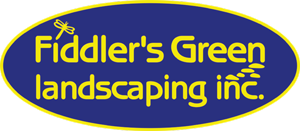Preparing Your Landscape for Fall: Final Cut, Fertilizer, and Elm Tree Pruning
As the vibrant colors of summer begin to fade, and the cool breeze of fall takes over, it's time to prepare your landscape for the seasonal transition. With the changing landscape comes the opportunity to prepare and nurture your outdoor spaces for the transition that lies ahead. Let us share with you some autumn preparations we offer that will help ensure your landscape flourishes after the winter freeze.
1. The Final Tidy Up: Mowing Your Lawn
As part of our fall clean-up service, our dedicated crews go the extra mile to ensure your lawn looks its best. If you happen to see our mowers in action when it seems like the grass doesn't need cutting, rest assured, we're using them strategically for a final tidy up. Our teams skillfully employ the mowers to assist in leaf removal from the lawn areas. Leaves are carefully blown onto the grass, and for areas with a significant leaf presence, our crews perform a quick rake job, leaving behind a thin layer of leaves. To finish the job and leave your property looking pristine, our mowers are then used to efficiently clear away the remaining leaves, ensuring a neat and tidy appearance. Your satisfaction is our priority, and our attention to detail shines through in every step of our fall clean-up process.
2. Fall Fertilizer Application: Nurturing the Roots
Our fall fertilizer application serves a dual purpose in nurturing your lawn. While it does aid in root development, its primary role is to ensure that vital nutrients are readily available when spring arrives. This proactive approach sets the stage for a rapid and vibrant green-up of your lawn as soon as the warmer weather arrives. By fortifying the soil with essential nutrients during the fall, we lay the foundation for a lush and healthy lawn that will be the envy of the neighborhood come springtime.
3. Pruning Elm Trees: Cultivating Resilience
Pruning of elm trees is strictly regulated to combat the spread of Dutch Elm Disease (DED), with permission granted only between October 1 and March 31 each year. This critical measure is aimed at safeguarding elm tree health. Pruning is, in fact, highly encouraged in Alberta outside of the annual ban period, as it plays a pivotal role in maintaining the vitality of these trees and bolstering their resistance against diseases.
Most people are aware of Dutch Elm Disease (DED) but may be uncertain about the when and how elm trees should be pruned. Since its introduction from Europe in 1930, DED has wreaked havoc on countless American elm trees across North America. To combat its spread, the City of Calgary enforces a pruning ban from April 1 to September 30, precisely when DED-carrying beetles are most active. During this period, fresh cuts may attract these beetles, heightening the risk of infection. Infected trees can become a breeding ground for beetles, which can then feed on healthy elms throughout the growing season. These pests subsequently breed and overwinter in dead and dying elm trees, underscoring the importance of adhering to the pruning regulations.
Investing in fall clean-up services isn't just about tidying up your outdoor space; it's a strategic step towards an enhanced landscape come spring. By clearing debris, pruning, and preparing your garden during the fall, you're setting the stage for a vibrant and thriving landscape that will burst with life and color when the warmer months return. Don't miss the opportunity to transform your outdoor haven; schedule your fall clean-up services today and reap the rewards of a breathtaking landscape next spring.

